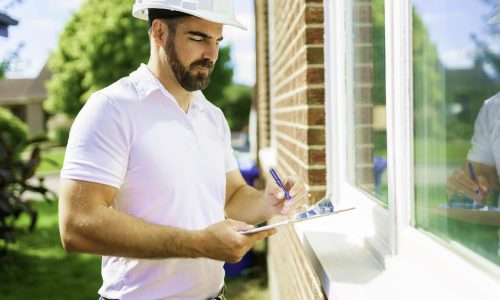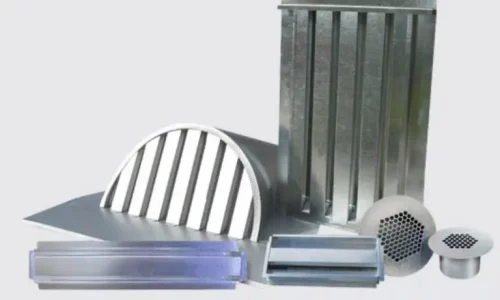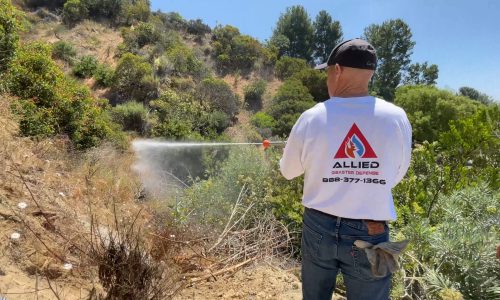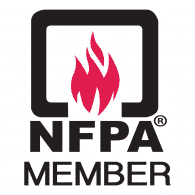Reduce Wildfire Risks up to 75%
Small changes to your home can reduce wildfire risk by up to 40%, and structural and vegetation improvements combined can lower wildfire risk by up to 75%. Furthermore, losses prevented can be much bigger (e.g. 5 times greater) when compared to a highly flammable environment. Some examples of home hardening solutions that will prevent your home from burning from the inside out is ember resistant vents. A lot of the times, the exterior build of the house is fire-resistant, like stucco, but the embers fly through the vents and causes the home to burn from the inside out. A simple addition of ember resistant vents significantly improves the chances of your home surviving the wildfires.
A combination of home hardening solutions, application of long-term fire retardant and reduction of fuel through vegetation management is the key to reducing wildfire risks at your property. Our team of experts can conduct a risk assessment to ensure your property is held at the highest standard from CALFire and the NFPA.
Creating Defensible Space
Defensible space is the buffer you create between your property and the wildland areas that surrounds it. This space is needed to slow or stop the spread of wildfire from embers and radiant heat.
Property & Home Hardening
Home hardening solutions including long-term fire retardant, fire resistent construction materials, vents, and windows increase your properties chances of survival exponentially.

Wildfire Risk Assessment
We assess the defensible space, combustibles around a home (home ignition zone), fences, decks, building shape, walls, roofs, roof vents, eaves & overhangs.

Home Hardening
Home hardening solutions such as ember gutter guards, fire-resistant vents and double pane window glass prevents your home from catching fire through embers slipping through to the interior of the home.

Long-Term Fire Retardant
We utilize the same Fire Retardants used to fight wildfires as the ones dropped in the Fire Department’s airplanes (without the red dye). This gold standard fire retardant is safe and effective to apply to vegetation.
PHOS-CHEK Fire Retardant Application
Environmental
Effective
Long-Term
Affordable
Please note: Each property is unique and may require a different amount of fire retardant. We recommend consulting with our team to assess your property’s specific needs.
Our team of former firefighters provides a high-quality service that will protect your property. Don’t hesitate to reach out with any questions.
Thanks for choosing our PHOS-CHEK Fire Retardant Application Service. Your safety is our priority!
Start The Process Today
We make it simple to protect your property. Here’s how it works:
- Step 1: Call or Submit Your Information to get started.
- Step 2: We’ll call you back to schedule your appointment. You don’t pay until you know we’ll be on our way.
- Step 3: In one easy visit, we’ll apply the long-term fire retardant, inspect your property, and provide you with information on how to make your property more wildfire resistant.
An Once of Prevention is Worth a Pound of Suppression When Fighting Fires
Long-term fire retardants contain retardant salts (usually fertilizers) that change the way fire burns, reducing fire intensity and limiting the spread of a fire even after the water in the retardants has evaporated. The goal of applying fire retardant to your property is to prevent the fire from getting close enough to your home.
With a combination of applying fire retardant along with home hardening solutions, the chances of your home surviving the wildfires increases significantly.
Small changes to your home can reduce wildfire risk by up to 40%, and structural and vegetation improvements combined can lower wildfire risk by up to 75%. Furthermore, losses prevented can be much bigger (e.g. 5 times greater) when compared to a highly flammable environment.
Our team of experts can conduct a risk assessment to ensure your property is held at the highest standard from CALFire and the NFPA.
Frequently Asked Questions
How long does the Fire Retardant last?
The Long Term Fire Retardant (LTR) will last throughout the rain season but generally half an inch of heavy rain is the standard of our retardant. This will need to be reapplied regularly for optimal use.
Is the Fire Retardant safe to use around vegetation?
Yes! The LTR is actually a fertilizer and safe to use around vegetation.
Where do you spray the Fire Retardant?
Depending on your property, generally we want to spray the first 0-30 feet (the intermediate zone) of your home. With larger properties with a lot of vegetation, we recommend vegetation management and additional application of fire retardants up to 100 feet of the property.
Do you spray Fire Retardant onto the home itself?
We spray within the first 5 feet of the home onto any vegetation that may pose a threat. The home itself should be built with fire resistant material and other home hardening solutions like ember proof vent guards and gutter guards. We conduct a home risk assessment to provide you with the best plan of action all around.
Why is the Fire Retardant not pink like the ones dropped off airplanes?
The fire retardant we utilize is Phos Chek, which is the same ones dropped off the airplanes without the pink dye. The pink dye is for the fire fighting teams to see and locate which areas have fire retardants applied. If it was clear, the fire team will have a hard time distinguishing which areas have fire retardants applied.
Can I water my plants when fire retardant is applied?
We recommend drip hoses or drip lines to water the roots without washing off the retardants.
What is defensible space?
Defensible space is a buffer between your home and the vegetation that surrounds it. This helps to slow or stop the spread of wildfire and provides firefighters a safe area to defend your home.
What is home hardening?
Flying embers from a wildfire can destroy homes up to a mile away. Home hardening is the process of protecting openings and using ember-resistant materials to increase the likelihood of survival when wildfire strikes.
How do I schedule an on-site assessment?
You can call us with the number on this website or fill out any form. Our team will then reach out to confirm a day and time our fire experts can conduct a risk assessment at your property.



Contact Us
- 310-620-9442
- 3120 E. Garvey S. West Covina CA 91791
- 24 Hour Emergency Disaster Service
- NFPA Member
